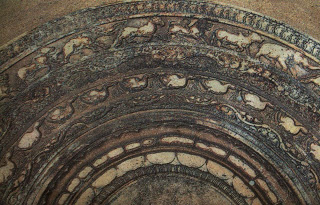Moonstone

The semi-round stone strides toward the start of the means prompting our Buddhist sanctuaries are generally known as the moonstone. Archeologists in our nation have concocted different thoughts with respect to this perfectly cut moonstone. The first moonstone found in quite a while of the Anuradhapura time frame has gone through different changes yet exists today. Yet, we find the moonstone which discusses verifiable importance during the Anuradhapura time frame and the Polonnaruwa time frame.

The moonstone of the Anuradhapura time frame has a half padma or piyuma which we can generally see with two petals expanding inwards and outwards. Toward the finish of the moonstone is a searing cutting. An investigation of the moonstone at Anuradhapura shows that this multitude of carvings were flawlessly cut around then.
At the hour of entering the Polonnaruwa period, the cow in the creature line which was in the twilight has been eliminated. The Liyawela is likewise all around cut and the petals are like the Nagarjuna carvings in India. Pundits say that the cow was taken out from the moonstone during this period because of the Tamil intrusion and that the regal family around then put stock in Lord Shiva and that the cow was the vehicle of Lord Shiva.

Despite the fact that we track down a semi-roundabout moonstone in the vestiges of the Polonnaruwa time frame, the moonstone in the Alahana Pirivena having a place with the Polonnaruwa time frame takes on a square shape. Just the swan and the half padma can be seen here.
The importance of the moonstone
Various archeologists have contrasting suppositions on the importance of this moonstone. In the interim, the assessment communicated by excavator Senarath Paranavithana is acknowledged by many.

“The engraving on the moonstone shows that avarice is typified, and that the world creature is limited by ravenousness and endures. The swan shows the Aryans betraying avarice and the swan, perceiving that the swan is a creature that can be isolated from milk, and subsequently reflect individuals who can recognize great and terrible.
The four monsters portray the honey bee, a hallowed homestead, and the blazing flares of Raga, Dvesha, and Moha portray the world creature, the elephant, the pony, the lion, and the cow, each of the four dreading racial slurs. Mr. Paranavithana is of the assessment that this shows that the world creature is conceived, passes on and ventures consistently all through the world by more than once orbiting in the circle. Mr. Paranavithana further expresses that this implies that the creature who understands the wretchedness will some way or another go to the way of Nirvana.




